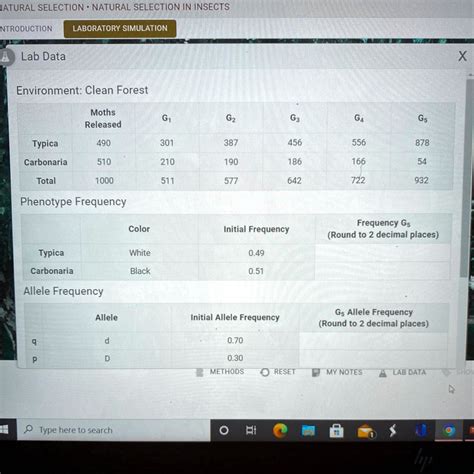Introduction
Phenotype frequencies, which represent the proportions of individuals with specific observable characteristics within a population, play a crucial role in studying inheritance patterns, population genetics, and evolutionary processes. Calculating phenotype frequencies in the 5th generation involves applying principles of Mendelian genetics and tracking the inheritance of alleles through multiple generations. This article provides a comprehensive guide to calculating phenotype frequencies in the 5th generation and recording the data in a lab setting.

Principles of Mendelian Genetics
Before delving into phenotype frequency calculations, it is essential to understand the fundamental principles of Mendelian genetics, which provide the foundation for predicting the inheritance of traits.
- Alleles: Genes exist in different forms called alleles, each representing an alternative version of a particular gene.
- Genotypes: The combination of alleles inherited from both parents determines the genotype of an individual.
- Phenotypes: The observable characteristics of an individual, such as eye color or height, are determined by the genotype.
- Dominant and Recessive Alleles: Dominant alleles express their trait even when paired with a recessive allele, while recessive alleles only express their trait when paired with another copy of the same recessive allele.
Calculating Phenotype Frequencies in the 5th Generation
Calculating phenotype frequencies in the 5th generation involves tracking the inheritance of alleles through multiple generations. Here’s a step-by-step approach:
- Start with the Parental Generation: Determine the genotypes of the parental generation (P generation).
- Track Alleles through Generations: Use Punnett squares to predict the genotypes and phenotypes of the F1, F2, F3, and F4 generations.
- Calculate Genotype Frequencies in F4: Determine the genotype frequencies in the F4 generation by counting the number of individuals with each genotype.
- Use Hardy-Weinberg Equilibrium: Assuming no evolutionary forces are acting, use the Hardy-Weinberg equilibrium equation (p^2 + 2pq + q^2 = 1) to calculate phenotype frequencies in the F5 generation.
Recording Lab Data
Once phenotype frequencies have been calculated, accurately recording the data in a lab notebook is essential for future reference and analysis. Include the following information:
- Date of experiment
- Names of investigators
- Generation number (e.g., F5)
- Phenotypes observed
- Number of individuals with each phenotype
- Calculated phenotype frequencies
Applications of Phenotype Frequency Calculations
Phenotype frequency calculations have numerous applications in genetics research, including:
- Population Genetics: Studying the genetic diversity and evolution of populations by analyzing phenotype frequencies.
- Genetic Counseling: Providing information on the probability of inheriting specific traits and genetic disorders.
- Selective Breeding: Improving desirable traits in plant and animal breeding programs by manipulating phenotype frequencies.
- Medical Diagnostics: Identifying genetic markers associated with diseases and developing personalized treatments.
Tips and Tricks
- Use clear and concise language to record lab data.
- Double-check calculations to ensure accuracy.
- Consult with an expert if needed to ensure proper interpretation of results.
Conclusion
Calculating phenotype frequencies in the 5th generation is a fundamental skill in genetics research. By understanding the principles of Mendelian genetics and following the steps outlined in this article, researchers can accurately calculate and record phenotype frequencies, providing valuable insights into inheritance patterns, population genetics, and evolutionary processes.
